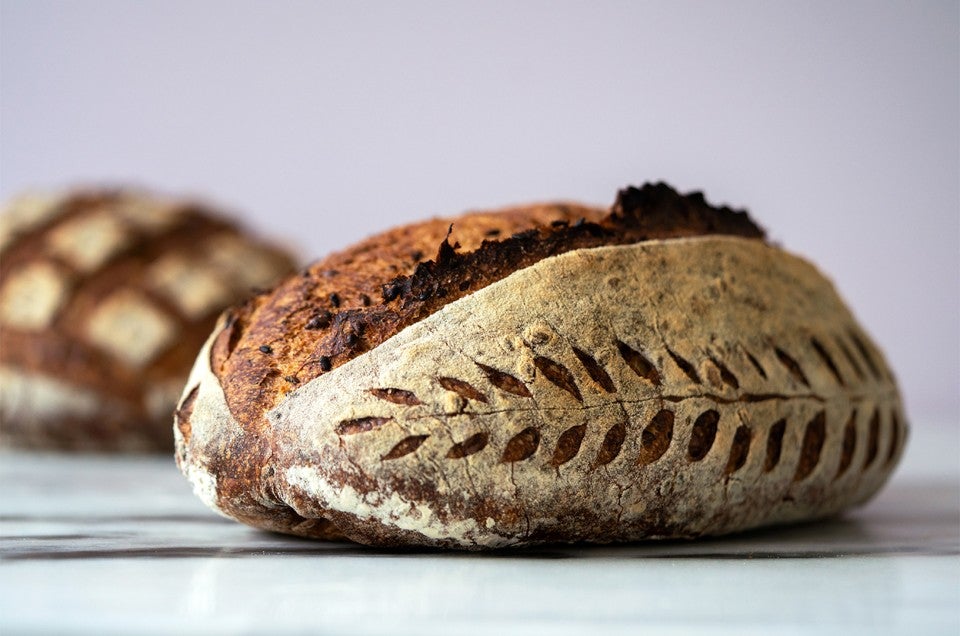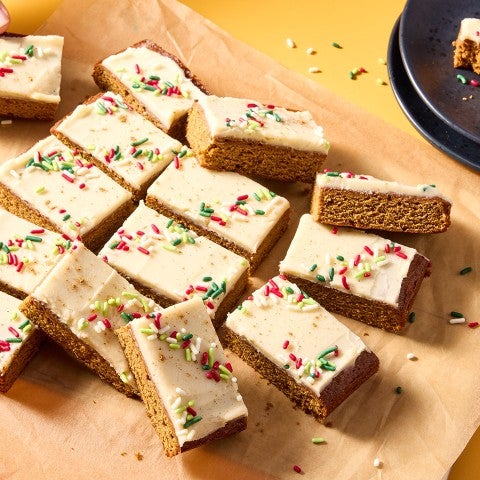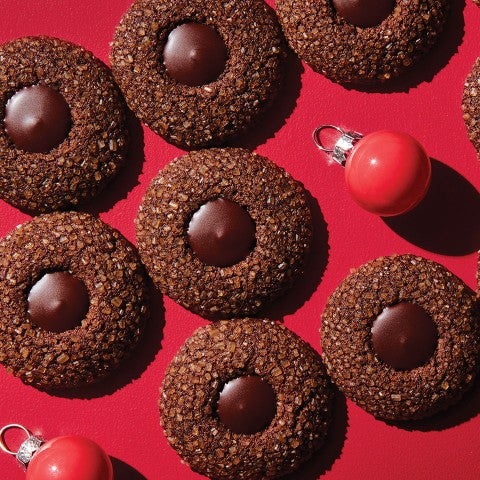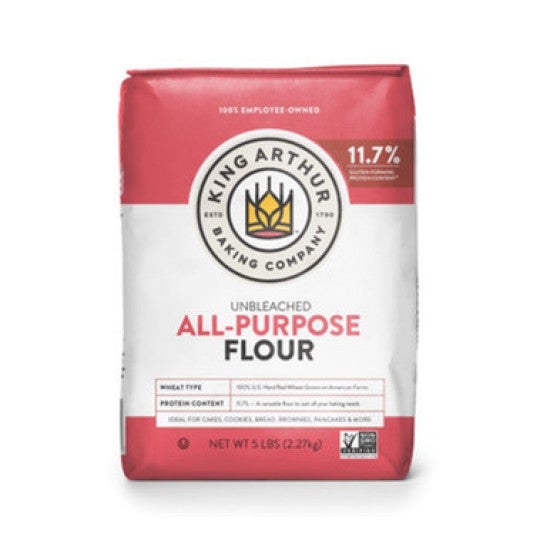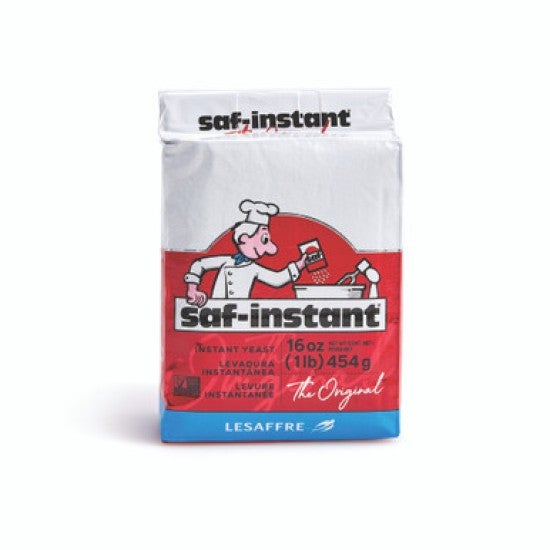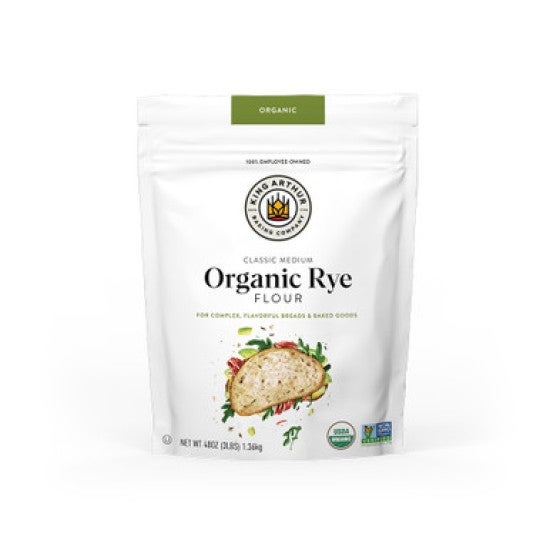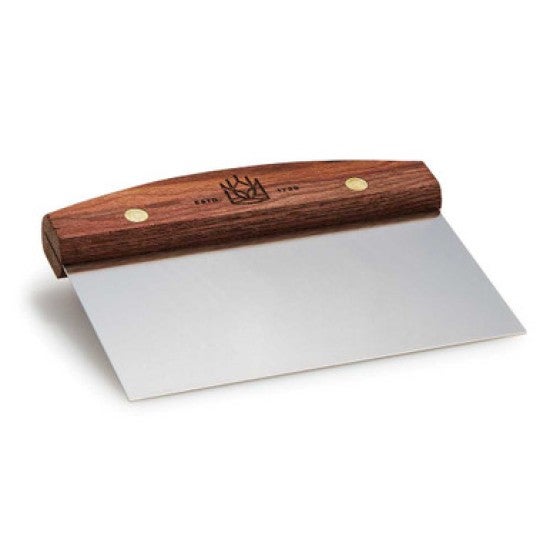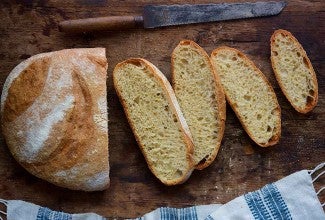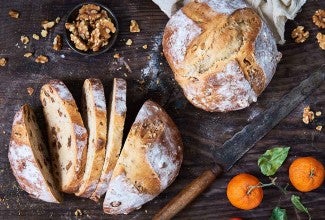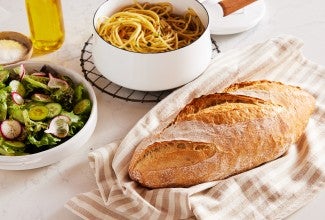-
To make the soaker: Mix all of the ingredients until thoroughly combined. Cover the bowl and let rest at room temperature for about 14 hours.
-
To make the pâte fermentée: Weigh your flour; or measure it by gently spooning it into a cup, then sweeping off any excess. Mix all of the ingredients until thoroughly combined. Cover the bowl and let rest at room temperature for about 14 hours.
-
To make the dough: When you’re ready to make the dough, combine all of the ingredients in a mixing bowl, or the bowl of your stand mixer. Mix and knead to make a supple, elastic dough. If you’re using a stand mixer, mix on low speed for 3 minutes to incorporate the ingredients, then on medium speed for about 5 minutes, or until the dough looks fairly well developed.
-
Cover the bowl with plastic wrap or a reusable cover and allow it to rise for 1 hour. After 1 hour uncover the bowl and, using a bowl scraper or spatula, run the scraper or spatula down the inside far wall of the bowl. Bring the dough up from the bottom of the bowl, and fold it over on top of itself. Turn the bowl 90° and repeat; repeat twice more (for a total of four times), turning the bowl 90° each time. This process, which helps develop the dough, is called a fold. Re-cover the bowl, and let the dough rise for another 60 minutes, adding another fold midway through if the dough doesn’t seem elastic and strong enough.
-
Gently deflate the dough and divide it into two pieces; each will weigh about 830g. Shape each piece into a rough ball, cover, and let rest for about 20 minutes; this rest will make the loaves easier to shape.
-
After the rest, shape the two pieces of dough into rounds or logs. Place them on a piece of parchment or a lightly greased baking sheet. If the dough seems very soft, for added support turn the loaves (seam side up) into two floured brotforms (round or oval), or into two bowls lined with floured smooth cotton dish towels.
-
Cover the loaves and let them rise for 50 to 60 minutes at room temperature (68°F to 78°F is ideal).
-
Towards the end of the rising time, preheat your oven to 450°F. At the same time, place two lidded oven-safe baking pans (such as a cloche, Dutch oven, or long covered baker) into the oven to preheat. Make sure the baker you choose is safe to be preheated empty, without anything inside.
-
When the oven is fully preheated, carefully transfer the loaves to your chosen bakers. Slash them several times across the top to allow for expansion.
-
Cover the bakers and place them in the oven. Bake the bread for 30 minutes. Remove the covers and bake 10 to 15 minutes more, or until the bread is golden brown. Its internal temperature should register about 210°F to 212°F on a digital thermometer.
-
Remove the bread from the oven and turn it out of the pans onto a rack to cool completely.
-
Store the bread at room temperature, loosely wrapped, for up to 5 days; freeze for longer storage.
